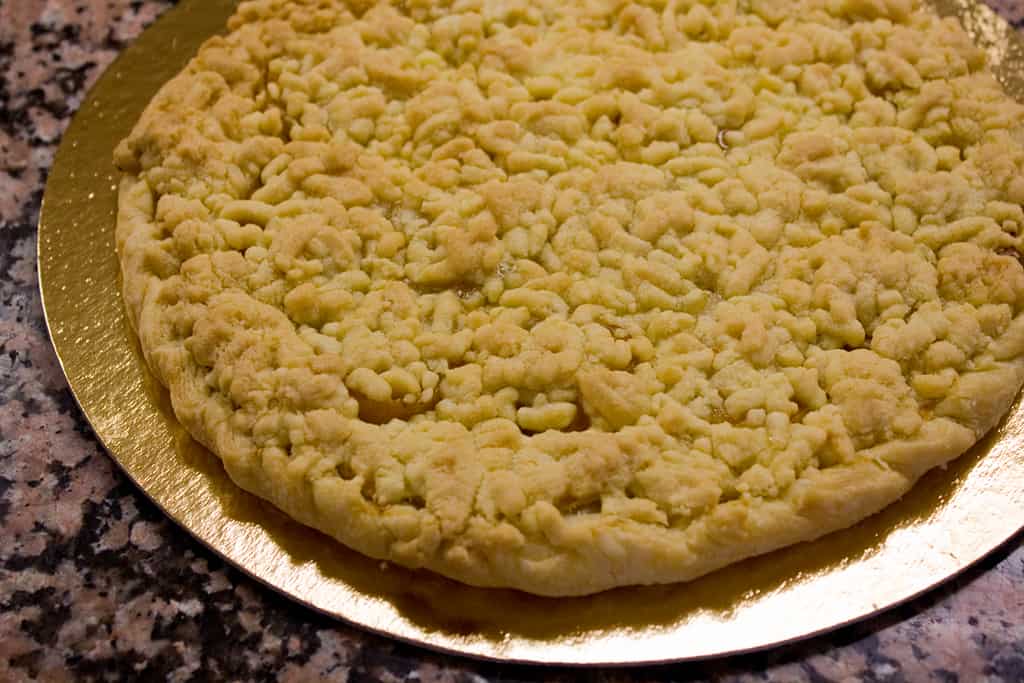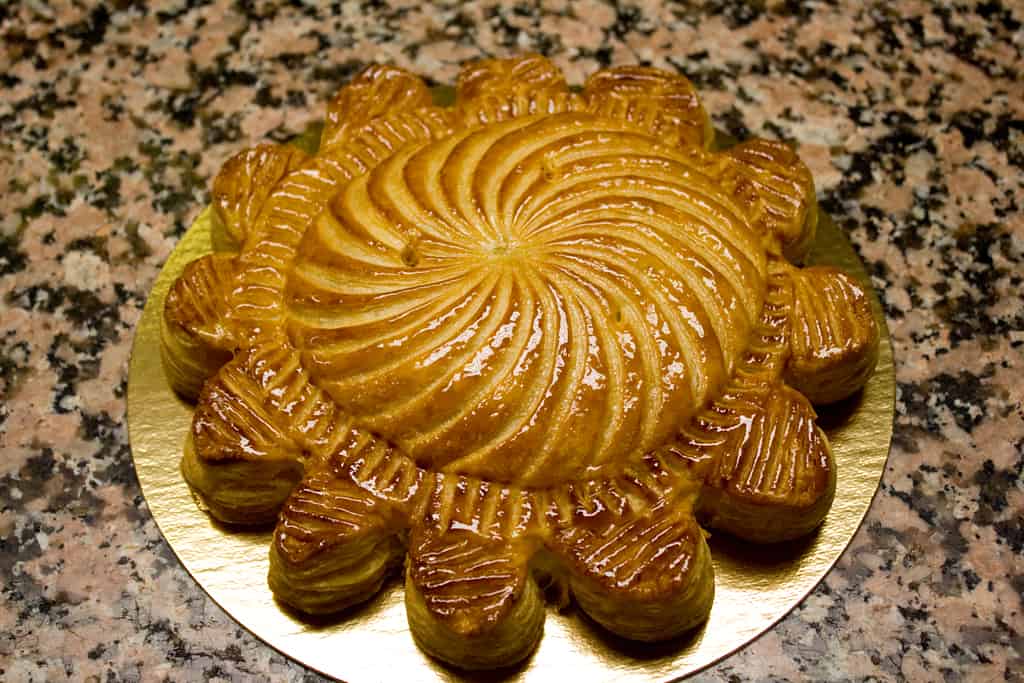Chocolate, chocolate, chocolate.
Joconde sponge cake with layers of ganache and coffee buttercream.
…
by jessica yoon
Chocolate, chocolate, chocolate.
Joconde sponge cake with layers of ganache and coffee buttercream.
…
Here’s a short photo summary of what’s been going on in school. Enjoy!
 Lesson 1: Gateaux: Streusel & Pavé aux Amandes
Lesson 1: Gateaux: Streusel & Pavé aux Amandes
The streusal consists of a puff pastry base, fromage blanc and apricot filling, and a crumble top. The pavé aux amandes is a gluten free cake made with just butter, sugar, eggs, and almond meal.
…
A few days ago I suddenly felt this desperate need to buy a book on fromage. I really don’t know anything about cheese except that I know I love it. I love everything from creamy camembert to stinky roquefort and even processed American cheese. However, there’s so much more I want to know, like how and where it was made, unique characteristics, and different food pairings. Learning about something makes the experience of getting to know so much better and more memorable. So I paid a visit to La Librairie Gourmade, a fantastic cookbook shop in the 2nd arrondissement, and got Le Guide des Gourmets: Fromage. It looks like a great handbook, covering not only French varieties, but also those around Europe and other parts of the world. It has a brief introduction on the history of cheese along with a good discussion of how it is made and the different categories. The text is in French, so it will take while awhile to get through that part, but at least I’ll develop a strong fromage vocabulary! So, in conjunction with my new “studies” I’m starting a fromage series on JDP. Maybe it’ll inspire some of you to try something new or find interesting cheeses in your local area!
I’m pleased to announce that I passed Basic Pastry! It was a good term that ended in a less than stellar exam. It wasn’t a disaster, but far from my best work. I had a few predictions as to what the three cakes would be, but never would I have guessed that the gateau basque would come out. Don’t remember what the gateau basque is? That’s right, you shouldn’t! Because I never made it! I missed that class because of the mandatory medical examination I had to get for my visa. A friend did go over it with me and we made it once at my house, but it’s still not the same as seeing it during demo, making it in a real kitchen, and taking my own notes. I pretty much ruled it out as a real contender for the exam because it’s a simple looking cake assembled like a double crust pie with a pastry cream filling. AND, a few people had mentioned that earlier recipes usually don’t make it to the exam. Well, lesson learned; if it’s on the list it’s fair game. I do though have a feeling that the Academics office purposely pushed for the gateau basque because I went and talked to them about my absence and how it would be a disadvantage if I got that on the exam. Just saying…it’s my little conspiracy theory.
Anyhow! I can also see why the cake was used for the exam because the dough is difficult to work with. It’s sort of a mix between a cake batter and tart dough. It’s not quite liquid enough to pour but way too soft to roll, which is what we had to do. Working fast on a generously floured surface is key, but working in a hot kitchen on a hot summer day is anything but ideal. The dough was sticky, messy, and insanely soft. I also overcooked my pastry cream, which I had a tiny panic attack about, but was able to save with addition of some extra milk (which the chef helped me out with). I felt fairly good about the cake when it went into the oven, but my heart just sank when I saw it come out. The pastry cream had leaked a little and the crisscross pattern that I made on top came brown unevenly. My bottom crust was rolled too thin and I don’t know what the hell happened with my top. The only consolation was that my three other classmates who made the gateau basque as well felt the same: disappointed. It just really sucked to be tested on a cake in which we couldn’t showcase a few more techniques that we learned and were emphasized in class like the dacquoise and st. honore, the other two examination recipes. Well, what’s done is done. I’m just ready to move on and do better during Intermediate!
To celebrate, or rather lift my spirits after the exam, I went to…
…
Basic Pastry classes have finished! Now off to exams! We will be tested on one of the following dishes:
Tarte aux Pommes
Saint-Honoré
Chausson aux Pommes & Palmiers
Dacquoise
Tarte Meringuée aux Poires Caramélisées
Moka
Brioche & Pain aux Raisins
Pithiviers & Sacristains
Buche Pistache-Chocolat
Gateau Basque
Along with the main dish, we are required to line a tart mold and pinch the edges. We will be given ingredient lists so I’m not too worried, but my main concern is time. We have two and a half hours to complete our pastry and make a tart shell! It sounds like a lot of time, but I know we will all be scrambling at the end. The chef’s advise to use: work quickly in the beginning so we have enough time to spend on our presentation. Looks are everything in patisserie. No one wants to buy an ugly cake.
Here are photos from the last four lessons and three practicals. Lesson 20 consisted only of a demo and tasting.
 Lesson 17: Feuilltage: Pithiviers & Sacristains
Lesson 17: Feuilltage: Pithiviers & Sacristains
The pithiviers is a pie-esque dish made with puff pastry. The inside is filled with an almond cream that turns very crumbly and moist when baked. Sacristains are twists similar in taste to palmiers. The difference lies in shape and the addition of chopped almonds and large grain, chouquette sugars. Sacristains are good to make with leftover, and scrap pieces of puff pastry.
…